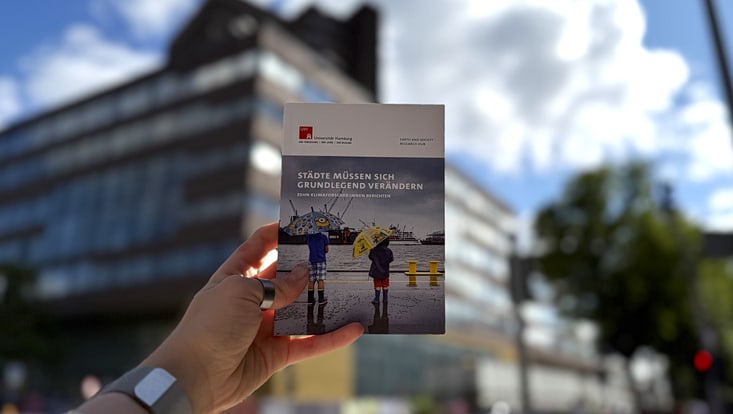10-year storm surge forecasts with AI
17 February 2025, by Stephanie Janssen

Photo: D. Solce/unsplash
With the aid of extensive weather data, a climate computational model, and artificial intelligence, Dr. Daniel Krieger from the University of Hamburg’s Center for Earth System Research and Sustainability (CEN) can now predict the average number and intensity of storm surges for coastal cities in the German Bight for the next ten years.
Using the examples of Cuxhaven, Esbjerg (Denmark) and Delfzijl (Netherlands), the study shows that the forecasts are reliable and extremely fast. For example, in the past decade there have on average been 11.6 storm surges a year in Cuxhaven. For the same period, the model arrived at 12.8 storm surges, with a tolerance of 1.6 plus or minus. The findings have just been published in the journal Geophysical Research Letters.
“Until 2029 the number, at 12 storm surges a year, will remain quite similar,” says Krieger, a climate modeler. But the same can’t be said for extreme flooding: “Whereas the highest annual storm surge was on average 2.5 meters in the past ten years, our model predicts an average of three meters for the next five years.”
Until now, climate models have been able to tell us whether or not more storms would generally form in the North Sea in future – but not how they would affect specific coastal cities; their resolution wasn’t high enough. But precisely this information is important at the local scale, since, depending on their position, features and orientation towards the wind, cities can be affected quite differently. Further, the information is useful with regard e.g. to coastal management for planned dyke construction, or to secure infrastructures for ports.
For their analysis, Krieger’s team used the hourly water level measurements taken in cities, where they have been recorded for the past several decades. For e.g. Cuxhaven, there are roughly 700,000 data points from 1940 to the present. The experts fed this data, together with weather maps and atmospheric pressure data on the period, into a statistical model with a self-learning algorithm. The data was used to train the model – or rather, 80 percent of it was; the rest was withheld so that the model’s performance could subsequently be tested. In the next step, the team linked the 10-year forecasts produced by a low-resolution climate model with the AI model to generate forecasts for individual cities.
Creating the forecasts takes roughly a second – more than a hundred times as fast as traditional, high-resolution climate models, which are painstakingly adjusted for regional differences and require substantial computing power.
Tentatively, the forecasts will be particularly interesting in the 2030s: an internal climate fluctuation is currently limiting the effects of sea-level rise. It has a cycle of approximately 35 years. As such, Krieger expects it to begin doing just the opposite, starting a few years from now. This could produce higher storm surges on a local level. Thanks to the new method, we can find out where.
Publication
Krieger D, Weisse R, Baehr J, Borchert L (2025): Machine learning-driven skillful decadal predictions of the German Bight storm surge climate; Geophysical Research Letters; https://doi.org/10.1029/2024GL111558
Contact
Dr. Daniel Krieger
University of Hamburg
Center for Earth System Research and Sustainability (CEN)
Phone: +49 40 42838-7622
E-mail: daniel.krieger"AT"uni-hamburg.de
Stephanie Janssen
Universität Hamburg
Center for Earth System Research and Sustainability (CEN)
Cluster of Excellence “Climate, Climatic Change, and Society” (CLICCS)
Outreach
Phone: +49 40 42838-7596
E-mail: stephanie.janssen"AT"uni-hamburg.de


